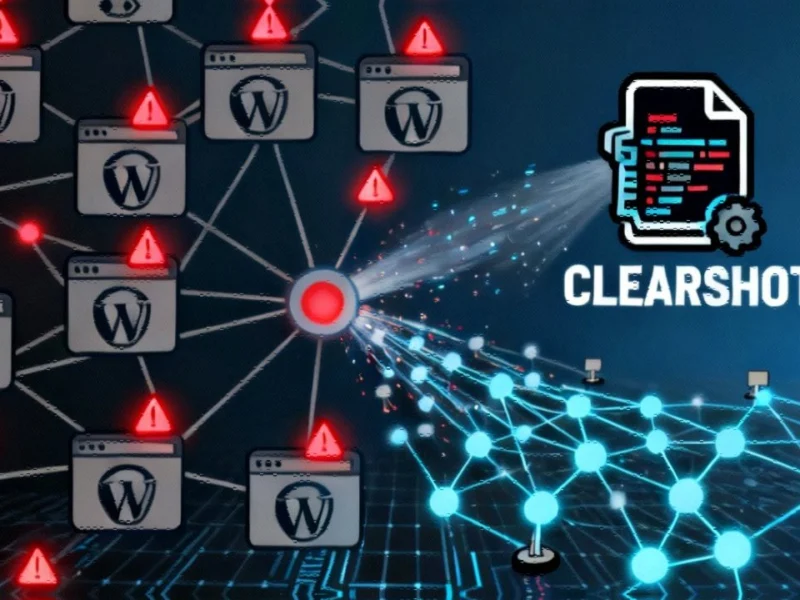Widespread WordPress Compromises
More than 14,000 WordPress websites were systematically compromised and transformed into malware distribution platforms, according to reports from Google‘s Threat Intelligence Group. The campaign, attributed to threat actor UNC5142, represents one of the most extensive web-based malware operations uncovered in recent years. Security analysts suggest the indiscriminate targeting focused on WordPress installations with vulnerable plugins, theme files, and in some cases, the WordPress database itself.
Blockchain-Enhanced Malware Infrastructure
The operation employed a sophisticated multi-stage JavaScript downloader called CLEARSHOT that leveraged blockchain technology for enhanced resilience. According to the report, using the BNB chain for payload distribution made traditional takedown efforts significantly more challenging. “The use of blockchain technology for large parts of UNC5142’s infrastructure and operation increases their resiliency in the face of detection and takedown efforts,” the researchers noted, highlighting how this approach complicates network protection mechanisms.
Social Engineering Tactics
The malware campaign utilized an advanced social engineering approach dubbed “ClickFix” that tricked users into executing malicious commands. Sources indicate that victims were prompted to copy and paste specific commands into Windows’ Run program or Mac’s Terminal application, which ultimately downloaded the payload. These tactics represent an evolution in how security hackers exploit human behavior rather than purely technical vulnerabilities.
Operational Timeline and Future Threats
Analysts suggest UNC5142 emerged in late 2023 and continued operations until late July 2025, though the current pause in activity may not indicate permanent cessation. The report states that given the group’s previous success in compromising websites and deploying malware, they may have simply improved their obfuscation techniques and continue operating with enhanced stealth capabilities. This pattern aligns with broader industry developments where threat actors continuously adapt their methods.
Technical Execution Details
The compromised WordPress sites served as initial infection vectors, with the CLEARSHOT downloader fetching secondary payloads from the blockchain. Landing pages hosted on Cloudflare .dev domains displayed the ClickFix prompts in an encrypted format, adding another layer of protection against detection. This sophisticated approach reflects recent technology trends where attackers increasingly leverage legitimate services and infrastructure.
Broader Security Implications
The campaign’s success highlights significant challenges in web security, particularly regarding blockchain-based threats. Security professionals reportedly face difficulties implementing traditional protection mechanisms for Web3 traffic due to the absence of conventional URLs. Meanwhile, global market trends continue to show increasing sophistication in cybercriminal operations. The immutable nature of blockchain further complicates seizure and takedown operations, creating persistent threats that require innovative countermeasures.
Industry Response and Protection Measures
Security experts emphasize the importance of maintaining updated WordPress installations and carefully vetting plugins and themes. The incident occurs amid wider related innovations in cybersecurity defense strategies. Organizations are advised to implement comprehensive security protocols and employee education programs to recognize social engineering attempts. As industry developments continue to evolve, proactive security measures become increasingly critical for preventing similar large-scale compromises.
This article aggregates information from publicly available sources. All trademarks and copyrights belong to their respective owners.



